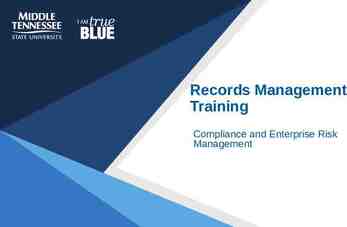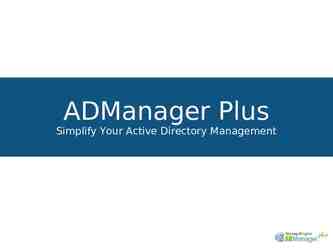Chronic Care Management Sherri Homan RN, PhD Missouri Department of
22 Slides507.50 KB

Chronic Care Management Sherri Homan RN, PhD Missouri Department of Health and Senior Services Office of Epidemiology Jefferson City, MO

Chronic Care Management Design Pioneered by Edward H. Wagner, MD, MPH and colleagues at MacColl Institute for Healthcare Innovation at Group Health Cooperative of Puget Sound, Seattle Washington* Supported by Robert Wood Johnson Foundation** *Wagner, E.H. (1998). Chronic disease management. What will it take to improve care for chronic illness? Effective Clinical Practice, 1, 2-4. **Improving Chronic illness Care (ICIC) is a national program supported by Robert Wood Johnson Foundation with direction and technical assistance by Group Health Cooperative’s MacColl Institute for Healthcare Innovation.

Chronic Care Management Premise Right Thing Right Patient Right Time

Chronic Care Management Model 1. Community 2. Health System Resources and Policies Health Care Organization 3. Self-Management Support Informed, Activated Patient Productive Interactions Improved Outcomes 4. Delivery System Design 5. Decision 6. Clinical Support Information Systems Prepared, Proactive Practice Team Wagner, E.H. Chronic Disease Management: What Will It Take to Improve Care for Chronic Illness? Effective Clinical Practice 1998; 1:2-4. Permission to reproduce model image granted from American College of Physicians (ACP), July 7, 2006.

Mobilize Community Resources Patients participate in effective community programs Form partnerships to fill gaps in needed services and avoid duplicating efforts Advocate for policies to improve patient care

Health System – Organization of Care Improvement at all levels of the organization Promote effective strategies Open and systematic handling of errors and quality issues to improve care Provide incentives based on quality of care Facilitate care coordination within and across organizations

Self-Management Support Patient has a central role in managing health Self-management support strategies – Assessment, goalsetting, action planning, problem solving, and follow-up Community resources to support selfmanagement

Delivery System Design Define roles and distribute task Planned interactions for evidence-based care Clinical case management services for complex patients Regular provider initiated follow-up Cultural sensitive care

Decision Support Daily practice of evidence-based care Share clinical guidelines and information with patients* Provide professional education Integrate specialty and primary care *Agency for Healthcare Research and Quality – National Guideline Clearinghouse http://www.guideline.gov

Clinical Information Systems Timely reminders for providers and patients Identify subpopulations for proactive care Facilitate individual patient care planning Share information Monitor outcomes Registry tracks individuals and populations Continuous Quality Improvement

Chronic Care Management Programs Comprehensive system change Targeting Case management

Primary Care Delivery System Traditional Provide acute care Diagnostic and laboratory services Treatment of signs and symptoms Prescriptions Brief education Short appointments Patient-initiated follow-up

Delivery System Redesign Traditional Provide acute care Diagnostic and laboratory Services Treatment of signs and symptoms Prescriptions Brief education Short appointments Patient-initiated followup Reconfigured Developed processes for CD Incentives for making changes Extensive patient education to increase patient’s confidence and skills Provider-initiated appointments and follow-up Evidence-based guidelines and provider interaction Information Systems

Targeting Approach Correctly assumes a small percent of the population accounts for most health care costs Possible to reduce cost based on this method However, health status changes occur frequently “Targeting” misses a substantial portion of the population at risk

Case Management Approach Many programs include: Brief hospitalization Low intensity follow-up care Conduct utilization review Chronic Care Management advocates for: Access to services that are proven to improve outcomes

Examples: Missouri’s Chronic Health Care Indicators, BRFSS, 2004 69.1% of seniors (age 65 ) received a flu shot in past 12 months 65.2% of adults with diabetes test their blood sugar at least once daily 55.6% of adults with diabetes have participated in a course or class to manage their diabetes 52.8% of adults (age 50 ) have ever had a lower endoscopy exam 39.9% of adults with arthritis have received a suggestion from their health care provider to exercise or engage in physical activity to help their joint symptoms (2003)

Example: Medicaid A web-based system to help fee-forservice Medicaid patients manage chronic conditions Integrate APS Healthcare’s CareConnection application with a chronic care improvement program Product – “collaborative medical record” Accessible to patients, providers and health care coaches The Advisory Board Company. (2006) Missouri creates web-based chronic care system. iHealth Beat. Retrieved June 20, 2006 from http://www.ihealthbeat.org

Incentives Providers - / Provider groups with full-capitation Health Plans (deliver returns within 6-12 mo) Purchasers / Employers Governmental entities greater incentive to engage in disease management Vary across provider organization May reduce patient expenses May also reduce profitable inpatient care Poorly reimbursed preventive services Performance related to defined quality goals

Primary Care Physician Use of Electronic Medical Records Country Percent Using EMR Sweden 90% Netherlands 88% Britain 58% Finland 56% Austria 55% Germany 48% Belgium 42% Italy 37% Ireland 28% Greece 17% U.S. 17% Spain 9% France 6% Portugal 5% EuroBarometer survey (N 3,504) U.S.A. survey (N 377) Source: Harris Interactive Inc. (2002, August 8). European physicians especially in Sweden, Netherlands and Denmark, lead U.S. in use of electronic medical records. HealthCare News, 2(16), 1-3. European Union Barometer June, July 2001 (numbers repercentaged by Harris Interactive) and Harris Interactive Surveys for U.S.A. in June 2001 and January / February 2001.

Care Management Processes in Physician Organizations (N 1,040) Process Diabetes Asthma CHF 1. Case management 39.7 39.7 43.4 2. Feedback to physicians 24.1 24.1 30.5 3. Disease registries 31.2 31.2 34.8 4. Clinical guidelines with reminders 33.9 33.9 27.7 Mean 33.2 32.2 34.1 Practices using all 4 12.7 7.6% 8.6 Casalino, L. et al. (2003). External incentives, information technology, and organized processes to improve health care quality for patients with chronic diseases. Journal of the American Medical Association.

Chronic Care Management Overarching Goal Improved Health Status Regular visits with health providers Focus on function Prevent exacerbations and complications Emphasizes self-management Ensures access to services proven to improve outcomes Establishes links through time with information systems Follow-up initiated by medical provider

In Summary Chronic care management offers improved health status for many with chronic diseases Chronic illness care should be based on the best available evidence Need consistent quality measures and additional research in the various models






